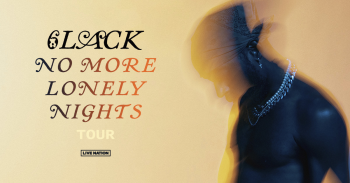
Source: Universal Pictures / Universal Pictures
Dev Patel’s directorial debut Monkey Man is an action packed, thrilling film that dives into deep topics like India’s caste system, Indian mythology and the dark disparities of his homeland. Read more about how Monkey Man exposes the deep horrors of the “have nots” inside.
According to a 2017 report published by Oxfam, the richest 10 percent in India controls 80 percent of the nation’s wealth. It also shared that the top one percent owns 58 percent of India’s overall wealth. By comparison, the richest 1% in the United States owns 37% of the wealth. It’s regarded as one of the most unequal income distributions in the world.
As a biracial, Indian and Black woman who grew up in America, when visiting India for the first time in 2019, it was difficult to ignore the harsh disparities of the people there. In Mumbai (where Patel’s film is set), the “haves” are certainly “having.” Their homes sit atop hills larger than the ones you’d see in Malibu, California. Meanwhile, the middle and lower class can’t make a decent enough wage to afford anything but the slums.
People have argued that San Francisco’s wage inequalities prove to be unbearable for the middle and lower classes, but that city has nothing on that of Mumbai and India at large.
Monkey Man follows a deeply intense action story of a young man (Patel), who seeks revenge for his mother’s death. The film debuted at SXSW and is now available to watch in theaters.
The story is set in Mumbai and inspired by Lord Hanuman. Dev shared that he was introduced to the Ramayana and Lord Hanuman’s stories by his grandfather, who used to narrate them to him when he was a child. At the SXSW screening, Dev explained to the audience why he found inspiration from Lord Hanuman. Hanuman is a god who is represents devotion, loyalty, valor, strength, humility and discipline. The character that Dev plays in the film, Kid, embodies these qualities as well.
“Hanuman really captivated me. He has been sort of an emblem for my father and many in my family. If you go to any gym in India, there’s Arnold Schwarzenegger, Ronnie Coleman and Hanuman. What baffled me growing up was this iconography of this super-strong being who could hold mountains in one hand and split his chest open. It reminded me of the iconography of Superman. I was like, this is amazing, I wish the world knew about it. When you go deep into it, he is sort of a guy who has lost faith in himself and had to be reminded of who he was,” Patel expresses to the SXSW audience via Hidustan Times.
Coming from a Gujarati Hindu family, Patel recognized the importance of uncovering the more spiritual principles of his people.
Still, the film dives even deeper into the extreme caste system in India, its’ sociopolitical issues, and the exploitation of Indian society.
“I really wanted to touch on caste system in India,” Patel added. “The idea where the poor are at the bottom, slaving away in these kitchens, then you go to the land of the kings and above them, you have God, a man-made god that is polluting and corrupting religion, and then you have heaven.”
Several Indian films have drawn inspiration from the Ramayana and Mahabharata, but Monkey Man’s portrayal has brought the insight to Hollywood and the West for the very first time. With mainstream exposure and success, Dev has skillfully shared what Indian filmmakers have been highlighting for decades in Bollywood.
Monkey Man combines elements of Indian cinema like the mother sentiment, Mumbai milieu, revenge story, caste system and more with Hollywood’s popular action genre. These themes coupled with Dev’s skillful directing may have crafted a genre all on its own.
Mark our words, but Hollywood will definitely be pulling more from the Bollywood scene in the near future.
Be sure to catch Monkey Man in theaters now.
Get a sneak peek inside the thrilling and insightful action film below with a new clip:

















